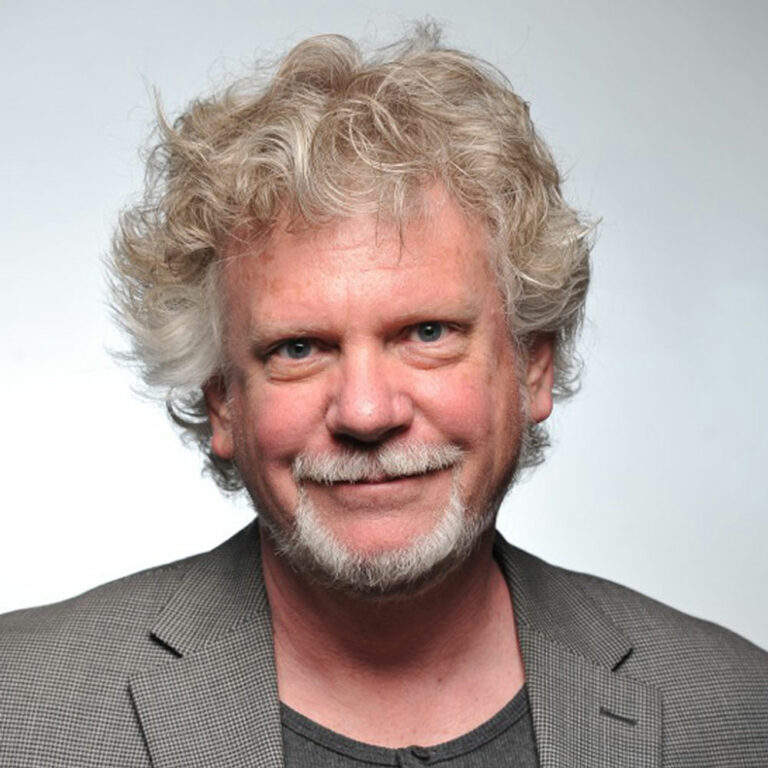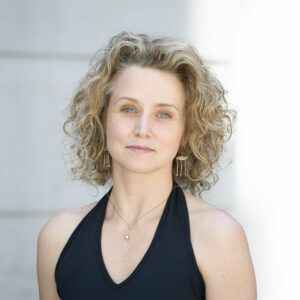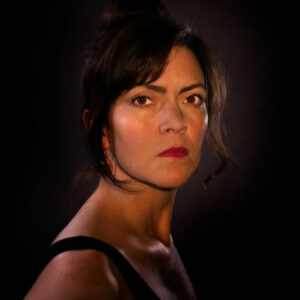Robert Thomson
Laureate, 2012
Image: Name, Title, Description
01
2012 Laureate
Acceptance Speech
I would like to begin with thanks.
- To Joe Rotman and the other Founding Donors, for their vision and generosity in establishing this prize.
- To Andrew Auerbach and the staff at BMO, for orchestrating this fine evening.
- And to Lou and Elinore Siminovitch: I’m sure that Elinore would be delighted with the legacy of the last 12 years; how many lives she has touched — not just the prize winners, but the ripple effect, as that impact is shared with colleagues, the community, and ultimately the audience.
- Maureen Labonté and her distinguished jury: Alison Green, Shawn Kerwin, and Jock Munro, who are here tonight; and Claude Goyette and Leigh Ann Vardy. No one would envy the task that you were given.
- And to Jennifer Tarver, who submitted such an elegant and persuasive nomination — which is surely the reason I am here. You have been my director, collaborator, champion and sparring partner on many projects now, and I am very proud to call you friend. (And the box of enchilada sauce you got me to smuggle across the border? – it wouldn’t fit it in my carry-on, so I’m holding it ransom until the next time we work together.)
My fellow designers! I value your experience, am inspired by your vision, and delight in your accomplishments and success. It has been such a great honour to be shortlisted for this prize with Richard Feren, Anick La Bissonière, Richard Lacroix, and my lighting colleague, Alan Brodie.
I would like to acknowledge the previous winners, some of whom are here today: John Mighton, Ronnie Burkett, Kim Collier. It is very humbling to see myself in such distinguished company. (I was hoping one of you would buy me a drink and tell me what to do with my nerves.)
And to everyone else here this evening who makes theatre a part of their lives – either through practice, or through support and appreciation – I salute you.
The medium of my work and creativity is light, not language, so this is more than a little daunting for me. Ironically, though I work with spotlights, I am rarely in them. In fact, lighting designers are often the last to join the rehearsal process and the first to leave, so it’s easy to feel on the fringes; that people you meet in the hallways aren’t quite sure who you are … or what exactly it is that you do. So thank you for noticing.
I fell in love with theatre in high school. I suspect it had as much to do with discovering the “community of theatre” as it did with having an excuse to miss class. This was abetted by the Math teacher (Mr. Hurst) who, seeing something in me that I did not yet recognize, wrote me an all-access hall pass: a license to skip class at will … to spend even more time in the auditorium.
For a summer job, I applied to work at the Ontario Place Forum. My dad suggested I ask our MPP (George Kerr) to write a letter of support, which I did, and, miraculously… he did. More miraculously: I got the job … which must have stunned the seasoned crew, who couldn’t know that this high school keener was effectively a political appointment.
At the age of 18, trying to figure out what you’re going to be when you grow up, is a daunting task. My younger daughter is in the throes of this deliberation right now, and I want to tell her – as my father told me – “Do something you love!” After a wasted semester in agricultural science, I knew I wanted to study theatre design. My father, ever the engineer, knowing I would need drafting skills, gave me a pad of graph paper and told me, “Learn how to print: one letter per square”. (He also told me to be prepared for unemployment … which, miraculously, has not been a major concern in my career. For the most part, I’ve been steadily self-employed for 35 years … one month at a time.)
I was incredibly blessed in my formative years. In my third summer at Ontario Place, I was farmed out to the Shaw Festival to run sound (the beginning of a 25-year long relationship). Then I was accepted to the Studio and Forum of Stage Design in New York City, where I studied under Lester Polokov for two years (thank you, Canada Council). Lester, probably my greatest teacher, taught me to see the world with fresh eyes, and to imagine how others might see and perceive things. I learned from some of Broadway’s best designers, and was exposed to the American theatre scene in a huge way. Yet this only served to make me appreciate my identity. I wanted to learn all I could, but more and more, I felt the imperative to return to Canada and apply that knowledge in a Canadian way. Working in Canadian theatre. It’s a decision I’ve never regretted.
My career in lighting started here in Toronto – like so many, at the Tarragon Theatre. Bill Glassco took a characteristic leap of faith and made me his Resident Lighting Designer. Two and a half years of steady employment … working with writers … on new scripts … discovering this extraordinary family of creative people — I learned by doing. (I still take pride that a Tarragon survey of audience favourites once listed my lighting designs alongside the concession cookies.) (Which were great.)
When Christopher Newton arrived at the Shaw Festival in 1980, he radically transformed the entire theatre. He brought his wonderful team of designers and together they retooled the visual landscape of design and its importance on the Festival’s stages. As a young designer, this was likely the most transformative experience of my career. This is how I met lighting designer Jeffrey Dallas who became one of my most significant colleagues and mentors. (He is still so sadly missed.) I had the honor to design many shows with Christopher, each a truly unique experience with memories that I will always treasure.
New York had been filled with Assistant Designers, apprenticing in the trenches to learn their craft. But in Canada, in the 70s, there were few role models to turn to. So my peers and I began to create structures for the future: establishing positions for Assistants; keeping a watchful eye for new talent.
Theatre is a journey of perpetual apprenticeship — to my colleagues, to my craft, to the work itself. Over the years I’ve had the privilege to work with many great artists and artisans on theatre, ballet, and opera projects, large and small. I’ve especially been fortunate to work with, and be influenced by, some great directors and choreographers: Robert Lepage, who exploded my preconceptions of opera; Robert Carson; Peter Hinton, who never feared the dark; William Forsythe; Jonathan Miller, who taught me how to light Shakespeare; James Kudelka; Neil Munro, who set the standard in research; Eric Bruhn; and Derek Goldby, who introduced me to Berlioz and taught me to light with panache! This is not an exercise in name-dropping. I just want to acknowledge my extraordinary blessings. And of course Jennifer. Who is so intensely collaborative, loves process, and lets me try crazy things.
The challenge of talking about lighting design— to paraphrase Martin Mull — is that “talking about lighting is like dancing about architecture”. My medium – light – is conjured and crafted for the human eye. It is elusive, difficult to document, and virtually impossible to articulate. (Hard enough with my colleagues, let alone a room as diverse as this!) The fact is, that theatrical lighting design only exists in that moment of time. It expresses time, exaggerates time, and, like the characters who people the stage, is intrinsically performative. Alive.
And the beauty of lighting design is its capacity – like sound design – to have an emotional impact on a production – ergo, the audience. But it’s no simple trick to quantify. I come home at the end of the day and what can I say…? That I’ve spent 14-hours making something more beautiful. More suggestive. More sinister. More provocative. More alluring. More … what it needed to be.
I’m currently working in Montreal on a production of John Logan’s play RED: the fictionalized story of American painter Mark Rothko, and his young assistant. It’s a fabulous cantata, exploring the nature and definition of art. As I’ve been considering what to say this evening, the themes of this discourse have continued to resonate. And it’s made me reflect on whether I can ever call myself “an artist”. Which is not false modesty, or some cliché of insecurity — though I do live in constant fear of the gig where I’ll be found out!
The other trick about lighting is that it only exists in concert with the other creative elements. Theatre is surely a true concert of artists. Lighting only has meaning in the elaboration of an idea, or a vision … be that a director, another designer or the story … or the emotional moment that wants shape, or guidance.
Each production is unique. My approach, as much as possible, is to have no approach at all … seeking all my inspiration from the text or score, the rehearsal hall, and the collective journey of my fellow artists. My preparation is that of a voyeur: everyday obsessively collecting images and observations of nature, architecture, media and visual art. Noting the effects of light on people, their lives and environments… and the emotional interpretations these evoke.
I try to reinvent myself with each new project – disconnecting from previous experience. I see my work like any other performer: discovering, with the director, the world of the play, and what we’re trying to say with it. This is the allure and great joy of the work that we do: with each new project, the opportunity to immerse ourselves in a new ocean of experience.
Of course it’s not all “swimming with dolphins”. Few artists can survive solely on their theatre earnings. The rigours of freelance life, the perpetual pursuit of employment – it can be grueling. You’re forced to make choices, wear too many hats. And for me, the night before a lighting plot is due – which is always too soon – never gets easier.
And the world in which we create is getting tougher and colder. One community mourns the loss of a major institution. Another grapples with governance scandal and a shoddy dismissal. Theatres are tightening their belts and it’s reflected in the programming… and in our shrinking vision. How do we compete with streaming video and reality TV?
In RED, the fictional Rothko rails desperately against the rising power of market-driven culture. More than anything, he abhors the commodification of art: work that seeks to be decorative, or fashionable, or simply convenient.
Of his own painting he says, “Not nice. Not fine. Real. And whatever it is, it’s not pretty. I am here to stop your heart, you understand that?! I am here to make you think!”
It’s important, theatre. The capacity to reflect on our experience, and tell our stories. To challenge society’s perceptions, assumptions, superstitions. And to do this in a live medium, in collusion with an audience. Now more than ever — as borders are shifting and distances shrinking, when the need to participate in a global exchange of culture is so urgent — we have a responsibility to share our stories with each other, and the world.
The Siminovitch Prize represents the highest level of peer recognition in Canadian theatre. How truly humbling! And beyond recognition, its purpose is to support the recipient in furthering their craft. How wonderful! In a world that fetishizes youth and newness, it’s reassuring to hear that I’ve still got something to give. Something to do.
In Red, Rothko instructs his assistant to spend time with the masters. He says…”Courage in painting isn’t facing the blank canvas. It’s facing Manet. It’s facing Velasquez.”
I’m excited by this gift, to spend time with some “masters” myself. Thirty-five years later, it’s like being given another hall pass.
From the other side of the footlights, the Siminovitch Prize has stood for the passion and commitment of donors and patrons. In the face of increasing government indifference, to see that there are still individuals and organizations who care deeply for the arts … gives us hope. The importance of an award like this in communicating the value of culture to the country cannot be overstated. And for this, I applaud you.
The very best part of being the Siminovitch recipient is the delightful task of selecting a rising talent to share a portion of this prize. I have selected two emerging designers to share the Protégé Award. It has been my honour and pleasure to have mentored and worked with both, and I believe they will soon be at the forefront of Canadian Lighting Design.
The first is a young man I met when he was an Assistant Designer at Stratford. I was so impressed with his talent, astute eye, calm manner and wonderful potential that I could not help urging (along with others) for his promotion. The following season, I shared a Rep Plot with him as one of the company’s Lighting Designers.
The second is a young woman who first assisted me on the transfer of a large musical to Canadian Stage — this while she was still finishing her final year at Ryerson Theatre School. She supervised the setup in my absence, and by the time I arrived, she was running the crew with the aplomb of a seasoned veteran. She has since assisted me on several projects and I have been so impressed with her bold ideas and design vision. We recently co-designed a production, and she will be taking over the completion of my current project in Montreal.
In RED, Rothko eventually fires his assistant. He says: “You don’t need to spend any more time with me. You need to find your contemporaries and make your own world, your own life. You need to get out there now. Into the thick of it. Shake your fist at them. Make something new.”
Ladies and Gentlemen, it is my great privilege to introduce you to my colleagues: Jason Hand and Raha Javanfar.
2012 Protégé
02
Simi News
Subscribe today to the monthly e-newsletter.
> Be the first to know about current artistic projects of the Siminovitch Prize community.
> Learn about emerging artists who are shaping the future of Canadian theatre.
> Stay informed about upcoming opportunities and calls for nominations.




